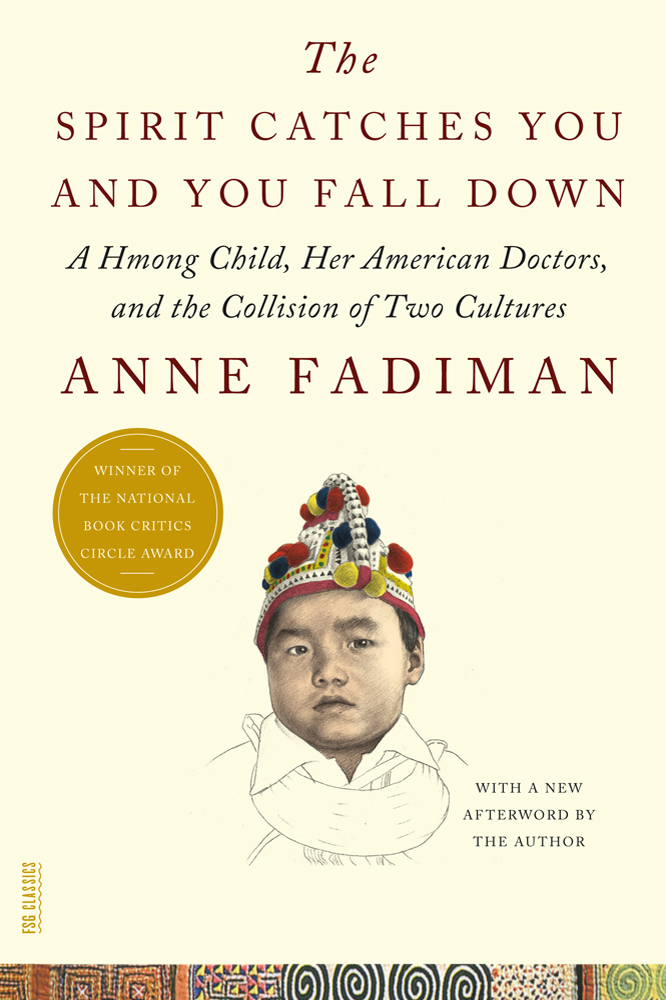
The cross section of respecting cultural beliefs and patient centered care is explored early on in the book The Spirit Catches You and You Fall Down, which looks at the experiences of a Hmong family in their hardships within the United States medical system as recent refugees. It is nearly a sad story of everything that could go wrong, went wrong. Significant lapses in the medical facility in Merced, prevented the Lee family from receiving the guidance they would need to help their newly born Lia Lee, who was suffering from an incurable, but treatable illness. In the Hmong culture it was believed that illnesses are caused by some spiritual misfortune, perhaps due to disobeying the desires of the spirits. Upon witnessing the new addition to their family with eyes rolled up, arms flailing, they were sure they had angered the spirits. They believed their child suffered from qaug dab peg –”the spirit catches you and you fall down,” which is generally translated as epilepsy in Hmong-English dictionaries (20).
“The noise of the door had been so profoundly frightening that her soul had fled her body and become lost,” (20).
The events began in the winter of 1982. Lia was about three months old, when her older sister had created a loud noise with a door, concurrently Lia had her first seizure. In Hmong culture illnesses were treated by a twix neeb (a shaman) someone who has had years of training with a master,” who is also considered to be someone of social status (21). Ironically, in Hmong culture “epileptics often become shamans,” thus the Lee family viewed Lia’s condition “’not so much a medical problem as it was a blessing,’” according to social worker Joannie Hilt (21-22). It would be many months before the Lee’s received a proper diagnosis for Lia’s condition, just like it took several runs to the emergency room (ER) before Lia was treated inpatient, and the Lees would meet Joannie.
In fact, in 1982, Lia’s first discharge from the ER was misdiagnosed as a case of bronchitis, two weeks later, she was rushed back to the ER for the same condition. The problem for the Lee family, is that nobody in the hospital spoke the Hmong language, except for the janitor whose dialect was a little rough around the edges. It would be impossible for a medical professional to know where to start, they relied on “veterinary medicine,” the use of observation alone to treat the patient. Another problem was that the hospital, MCMC, had been “plagued with financial problems” so hiring translators and interpreters was not really an option (24). Even though “one in five residents of Merced,” at the time was Hmong, MCMC simply did not appropriately staff a medical translator, they called on younger family members with little English experience, or workers who spoke Hmong to deliver critical medical information (24).
Due to the Hmong traditions to use shamans to heal illnesses, it was not uncommon for Hmong hospital visits to last longer than the average stay. This ordeal, combined with lack of health insurance, and lack of medical translators created the perfect storm for confusion and distrust in the United States medical system. A visit to the hospital was a last-ditch effort in the Hmong community. Hmong history is rich with stories of “’bravery and courage inferior to that of no other people,’” in their unyielding defense of their values and beliefs (17). In their battles against the Chinese it was said, “Hmong do not like to take orders…they would rather flee, fight, or die than surrender…they are rarely persuaded that the customs of other cultures…are superior,” so how was it that the Lee family surrender their beliefs to a Western medicine (17)?
Perhaps it was due to the lifesaving medical intervention, using Western medicine, for two of their other children while in a Thai refugee camp a few years before Lia was born. In a later interview, Joannie Hilt said these experiences “‘did nothing to shake their faith in traditional Hmong belief…it did convince them that on occasions Western doctors could be of additional help,” thus the Lees ran Lia to MCMC many times (23). On one such occasion Lia had a seizure in the hospital which would finally lead to a proper diagnosis. Dan Murphy, a medical resident at the time, said “’she was the youngest person I ever dealt with who was seizing,’” (27).
Lia’s condition has a cultural meaning, in the medical sense, “epilepsy is a sporadic malfunction of the brain,” a serious incurable but treatable illness (28). Dr. Murphy takes a ‘rational view’ in reciting, “’men think it is divine merely because they don’t understand it,’” a view that is part Hippocratic and arguably hypocritical (29). The key ordeal for the Hmong family put simply was a lack of cultural understanding on the part of the hospital. Some 15,000 members of the Hmong community answered an invitation to ask Mao Thao, a Hmong-American woman who had recently visited a refugee camp in Thailand in 1982, questions. They asked questions like “is it forbidden to use a txiv neeb to heal illness in the United States,” (32)?
These questions powerfully support the claim that the United States medical practice had significant lapses for treating those from the Hmong community. At the crossroads of respect for cultural beliefs and patient centered care was a belief that suggested “Westerns [were] holding all the knowledge. As long as they persisted in this view…Hmong would view it not as a gift but as a form of coercion,” despite their oath to do no harm (37). Hmong people were not accustomed to treating illnesses the Western way. Little differences in treatments had a major impact.
A txiv neeb was polite, a medical doctor (MD) asked invasive and rude questions, a txiv neeb would stay at a family’s home for an extended length of time, a MD’s visit to a patient’s room is short, a txiv neeb can immediately identify a cause, MDs require extensive testing and still struggle sometimes to diagnose. Txiv neebs also have a vested interest in a Hmong person’s wellness, it is their social status as a shaman on the line, MDs, on the other hand, have a certain protection from liability. The idea for the Hmong in refugee camps was that “only the very poorest people who had no relatives or resources whatsoever would subject themselves to the camp hospital treatment,” to exemplify the Hmong view on Western medicine (36). A txiv neeb was never so invasive to ask one to remove their garments, “doctors never even mention the soul,” illustrating the vastness of differences between the treatment of illness (33).
